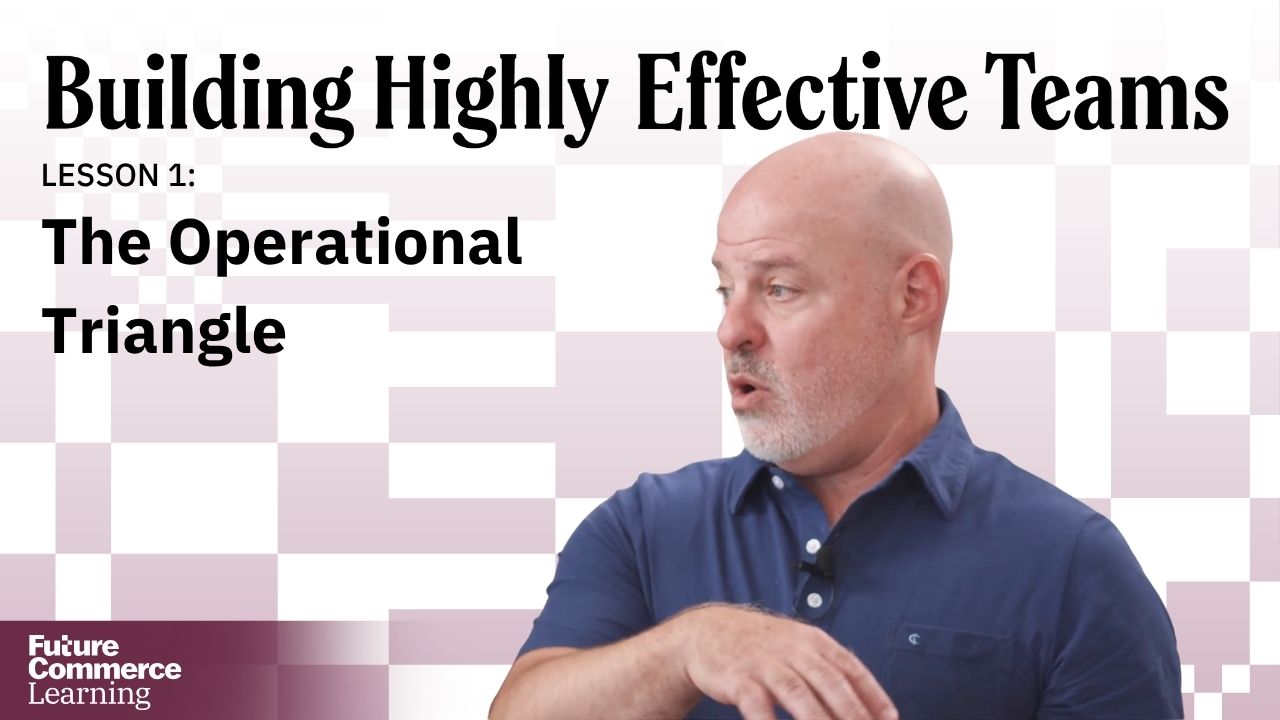
Learn the Operational Triangle framework: a practical model for balancing people, customers, and profit so your team can sustain success.
The Operational Triangle is Jon Klonsky’s core framework for running a healthy organization. By keeping Team, Customer, and Profit in dynamic balance, leaders avoid over-rotating toward one metric at the expense of another. You’ll learn how to use this model to evaluate priorities, make trade-offs, and build teams that thrive in the long run.
Lesson Contents
While everyone’s organization is unique, the framework of the operational triangle can be applied. In this reflection section, you’ll outline the parts of your unique operational triangle.
Team: who is on your team? Think through the structure of your team. Who are the leaders? Who are those who lead but may not have leadership roles? Who has an influence on your team? Does your team have clear goals, a “why,” values, and incentives?
Customers: Who are your external customers? What about your internal customers? What products or services are you providing for these customers? What promises are you making your customers? Are you fulfilling these promises?
Profit: How does your role or your team affect your profits? What does success look like in building profits?

Learn the Operational Triangle framework: a practical model for balancing people, customers, and profit so your team can sustain success.
Those things we shouldn’t say out loud? We say them on the private feed. Bi-weekly “after dark” podcasts and a members-only newsletter, just for subscribers.
Our research reports combine visionary thinking with data-backed findings from our own advisory panel, made up of leaders at brands you know and trust.
Upskill, cross-skill, and future-proof your teams with Future Commerce Learning, the leading digital eCommerce learning platform, created by professional educators.
The Operational Triangle is Jon Klonsky’s core framework for running a healthy organization. By keeping Team, Customer, and Profit in dynamic balance, leaders avoid over-rotating toward one metric at the expense of another. You’ll learn how to use this model to evaluate priorities, make trade-offs, and build teams that thrive in the long run.
Lesson Contents
While everyone’s organization is unique, the framework of the operational triangle can be applied. In this reflection section, you’ll outline the parts of your unique operational triangle.
Team: who is on your team? Think through the structure of your team. Who are the leaders? Who are those who lead but may not have leadership roles? Who has an influence on your team? Does your team have clear goals, a “why,” values, and incentives?
Customers: Who are your external customers? What about your internal customers? What products or services are you providing for these customers? What promises are you making your customers? Are you fulfilling these promises?
Profit: How does your role or your team affect your profits? What does success look like in building profits?